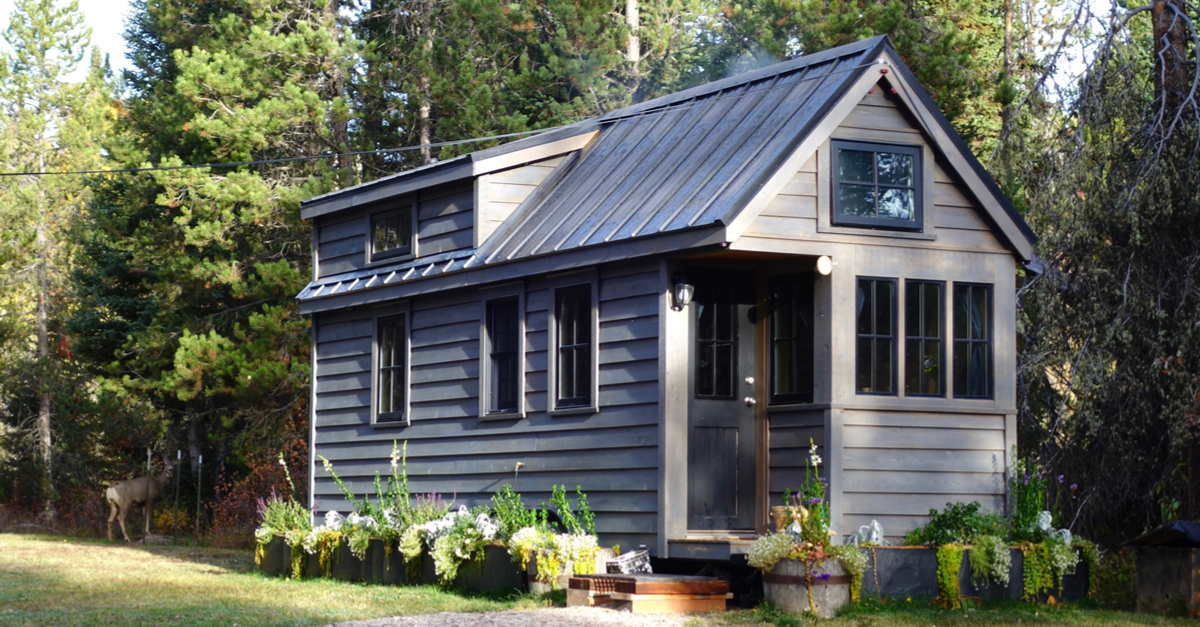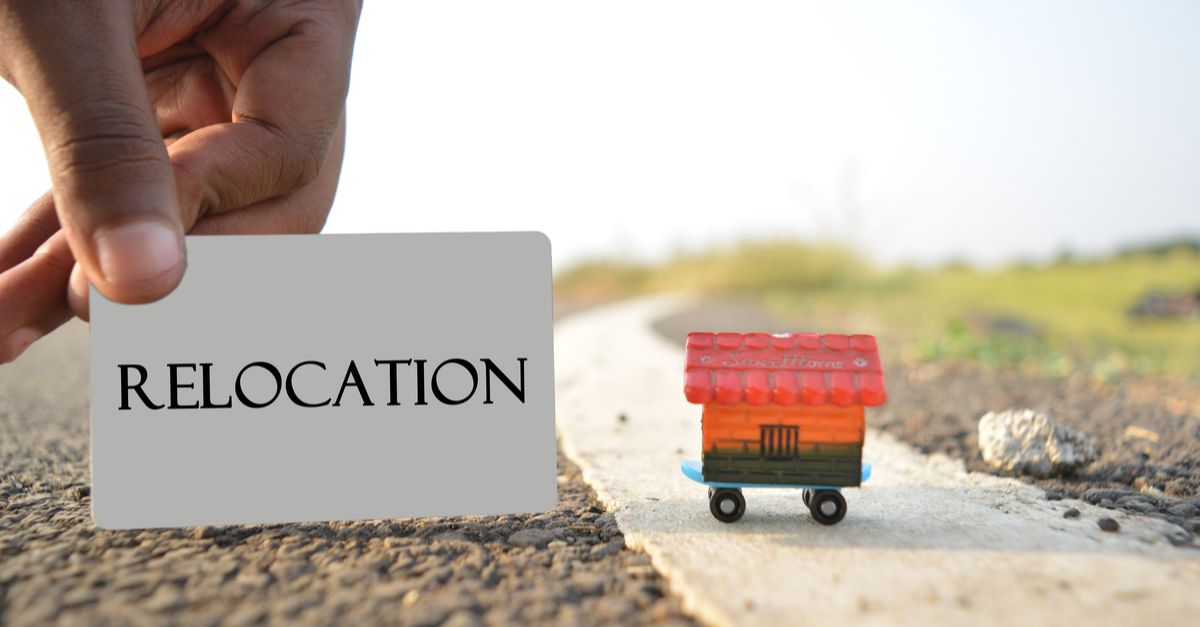The Mini-House Wave

Part of the popularity of mini houses comes from the exposure that they’ve received on various television programs.
We’d like to add that a large percent of mini-house owners have a salary that’s higher than the average in their respective countries.
In other words, while you might think that the size of a house is linked to financial resources, they aren’t always directly related.
What are mini-houses?
Mini-houses are small 20 to 30 meter-squared homes. They include all of the same amenities as a normal-sized home.
Mini-houses include bathrooms, a kitchen, bedrooms, a living room, a washing machine, etc.
As it currently stands, there isn’t a minimum size that defines a home as a mini-house; but you can even find some today that are just 13 meters-squared.

The designs of mini-homes have changed over time. Mini-houses are no longer the classic bungalow, but rather often sport a minimalist design that makes the most out of every centimeter.
They’re modern yet practical spaces.
They’re also known as “tiny houses” and have been around for more than 20 years in places such as Japan, the United States and United Kingdom.
Why are they popular?
Mini-houses have appeared nearly everywhere around the globe. The mini-house boom, however, took place in the United States.
Many people saw mini-homes as their only option of owning property.
A mini-house is much more economical than a normal-sized house. Thus, they’re more obtainable and can allow buyers to skip mortgages.
On the same note, people also lean towards mini-houses because the bills are also mini.
People who want to live in a mini-house often wish to simplify their life as well as their bills, saving their money for other things such as travelling.
Furthermore, mini-houses are lighter, easier to personalize, portable and most importantly, ideal for preserving the environment. They can also have a garden.

In Spain, the mini-house boom slowly started in 2005. However, the idea of living in such a small space hasn’t convinced everyone yet.
One of the factors that’s been keeping mini-homes from being a plausible option is their legality.
Many provinces don’t consider buildings that are smaller than 50 meters-square as official housing.
Consequently, many companies sell these mini-houses as trailers or RVs while recommending buyers to file them as private assets in order to avoid any kind of legal trouble.
Price
The cost of these tiny houses varies quite a bit depending on their size and material as well as their energy efficiency or eco-footprint.
Generally, you can find 36 meter-squared homes for a minimum of 20,000 euros.
Experts predict a rise in the price of square-meters as their demand continues to rise.
Furthermore, material costs are also more expensive because they’re made to last longer in addition to being more ecological.
There are also mini-houses that use recycled material in their construction.
Though mini-houses can be expensive, they don’t always need a mortgage, which is definitely a plus.
Who can most benefit from a mini-house?
The younger crowd can enjoy a lifestyle that only requires a small space.
They’re people who want to be independent; free from a mortgage and free from living in just one place.
Don’t forget that mini-homes are transportable, which makes it easy for buyers to move to a different city or even a different country.

Potential buyers are young with an adventurous spirit, or those who care about their eco-footprint.
They’re not necessarily people with limited resources. On the contrary, people who live in mini-homes often are economically well-off and are looking for something different.
Conclusion
Living in a mini-home, according to those that do, will change your perspective on life.
Life in a big city offers us a busy, work-centered, bill-paying life with little enjoyment.
Mini-houses help their owners see what it means to enjoy what really matters.
Living without being rushed nor debt while taking care of the environment.
It means enjoying the spontaneity of living here one day, and there the next.
Part of the popularity of mini houses comes from the exposure that they’ve received on various television programs.
We’d like to add that a large percent of mini-house owners have a salary that’s higher than the average in their respective countries.
In other words, while you might think that the size of a house is linked to financial resources, they aren’t always directly related.
What are mini-houses?
Mini-houses are small 20 to 30 meter-squared homes. They include all of the same amenities as a normal-sized home.
Mini-houses include bathrooms, a kitchen, bedrooms, a living room, a washing machine, etc.
As it currently stands, there isn’t a minimum size that defines a home as a mini-house; but you can even find some today that are just 13 meters-squared.

The designs of mini-homes have changed over time. Mini-houses are no longer the classic bungalow, but rather often sport a minimalist design that makes the most out of every centimeter.
They’re modern yet practical spaces.
They’re also known as “tiny houses” and have been around for more than 20 years in places such as Japan, the United States and United Kingdom.
Why are they popular?
Mini-houses have appeared nearly everywhere around the globe. The mini-house boom, however, took place in the United States.
Many people saw mini-homes as their only option of owning property.
A mini-house is much more economical than a normal-sized house. Thus, they’re more obtainable and can allow buyers to skip mortgages.
On the same note, people also lean towards mini-houses because the bills are also mini.
People who want to live in a mini-house often wish to simplify their life as well as their bills, saving their money for other things such as travelling.
Furthermore, mini-houses are lighter, easier to personalize, portable and most importantly, ideal for preserving the environment. They can also have a garden.

In Spain, the mini-house boom slowly started in 2005. However, the idea of living in such a small space hasn’t convinced everyone yet.
One of the factors that’s been keeping mini-homes from being a plausible option is their legality.
Many provinces don’t consider buildings that are smaller than 50 meters-square as official housing.
Consequently, many companies sell these mini-houses as trailers or RVs while recommending buyers to file them as private assets in order to avoid any kind of legal trouble.
Price
The cost of these tiny houses varies quite a bit depending on their size and material as well as their energy efficiency or eco-footprint.
Generally, you can find 36 meter-squared homes for a minimum of 20,000 euros.
Experts predict a rise in the price of square-meters as their demand continues to rise.
Furthermore, material costs are also more expensive because they’re made to last longer in addition to being more ecological.
There are also mini-houses that use recycled material in their construction.
Though mini-houses can be expensive, they don’t always need a mortgage, which is definitely a plus.
Who can most benefit from a mini-house?
The younger crowd can enjoy a lifestyle that only requires a small space.
They’re people who want to be independent; free from a mortgage and free from living in just one place.
Don’t forget that mini-homes are transportable, which makes it easy for buyers to move to a different city or even a different country.

Potential buyers are young with an adventurous spirit, or those who care about their eco-footprint.
They’re not necessarily people with limited resources. On the contrary, people who live in mini-homes often are economically well-off and are looking for something different.
Conclusion
Living in a mini-home, according to those that do, will change your perspective on life.
Life in a big city offers us a busy, work-centered, bill-paying life with little enjoyment.
Mini-houses help their owners see what it means to enjoy what really matters.
Living without being rushed nor debt while taking care of the environment.
It means enjoying the spontaneity of living here one day, and there the next.







